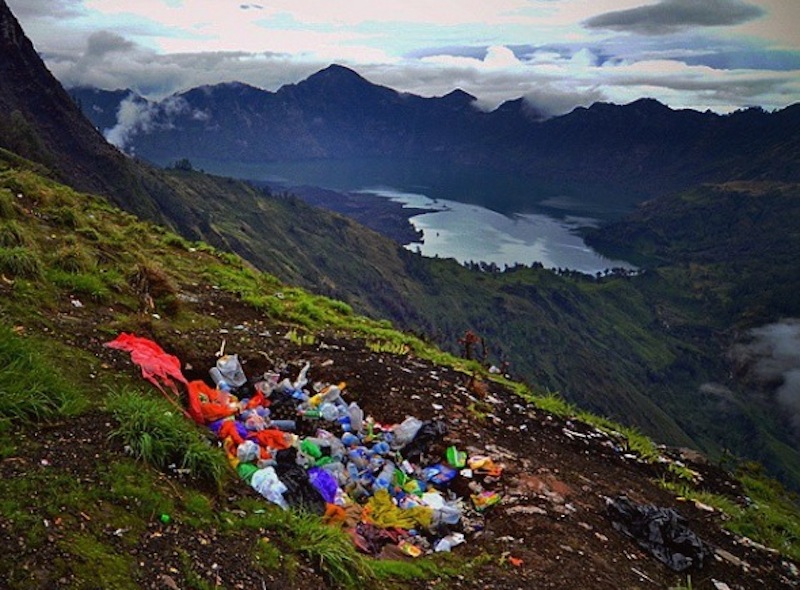A Google image search for Gunung Rinjani, Lombok’s famous volcano produces awesome results. I was instantly inspired and booked a 3 day-2 night adventure.
The initial ascent arrives at the crater rim where the adventurous can peer down into the caldera, the volcano’s crater, formed when the once even bigger Rinjani exploded years ago. Inside the caldera lies not only Gunung Baru (the recently erupting smaller volcano) but also a six-kilometer-wide brilliant blue lake, Danau Segara Anak, as well as various hot springs.
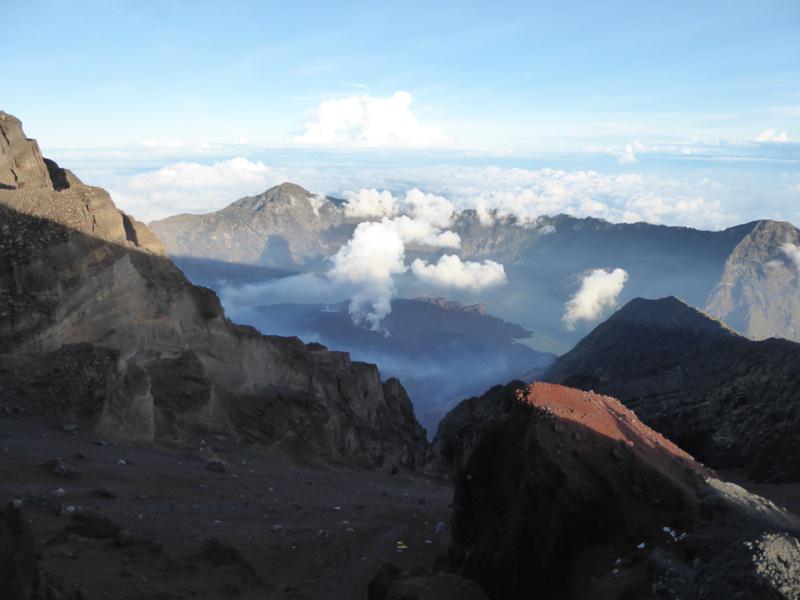
The Adventure Begins
My trek started at the National Park Office in the village of Sembulan where I stared apprehensively up towards the 3726 meter summit of Indonesia’s second highest volcano. “Rinjani is sacred; many locals make pilgrimages to leave offerings to resident Gods and Spirits,” explained my experienced guide Dony, as we began our walk.
We traversed fertile valleys and pristine forest, disturbed only by herds of cattle and the chatting of excited trekkers. After an impressive lunch, prepared by dedicated porters, we started to climb. Seven hours later, we reached the extremely crowded campsite on the crater’s edge. Clouds rolled into the crater, momentarily smothering the spectacular views.
Litter, Litter Everywhere
My attention soon turned to the campsite itself: there was a serious garbage problem. Dony and the porters were sweeping away all sorts of waste, from vegetable peelings to dirty tissues, to find a place to set up camp. I remembered the Lonely Planet’s warning, “sadly many camps are litter strewn,” it said. I could smell the piles of festering garbage rotting. There were no bins.
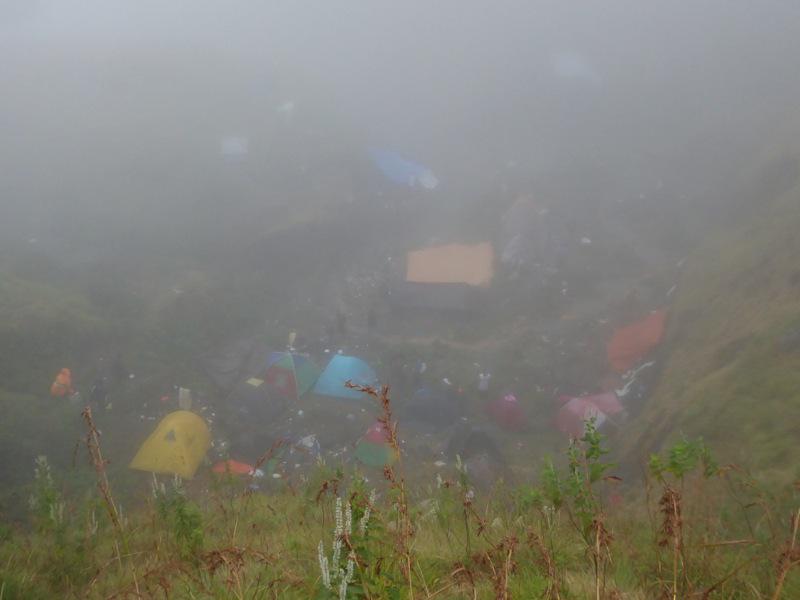
Embarrassed, Dony turned to me: “When I see this rubbish, I feel a sadness in my heart,” he lamented. The porters were keen to show me how they were collecting our trash ready to take back down. The mess was blamed on unscrupulous trek companies and unaccompanied tourists. I wasn’t the only one to notice: experienced trekker, Emily Andrews told me she hadn’t encountered anything like this during her previous Inca Trail and Mount Kilimanjaro adventures.
A Night-Time Struggle
We woke at 2 am to trek to the top. It was a hard, dark climb, but the sky was clear and the stars glittered. I looked down into the crater and could see the lava-red glow of Gunung Baru. The path turned to loose volcanic ash. I struggled to get a solid foothold. It was a serious challenge. At last, I was at the top. The sun rose. The views were incredible.
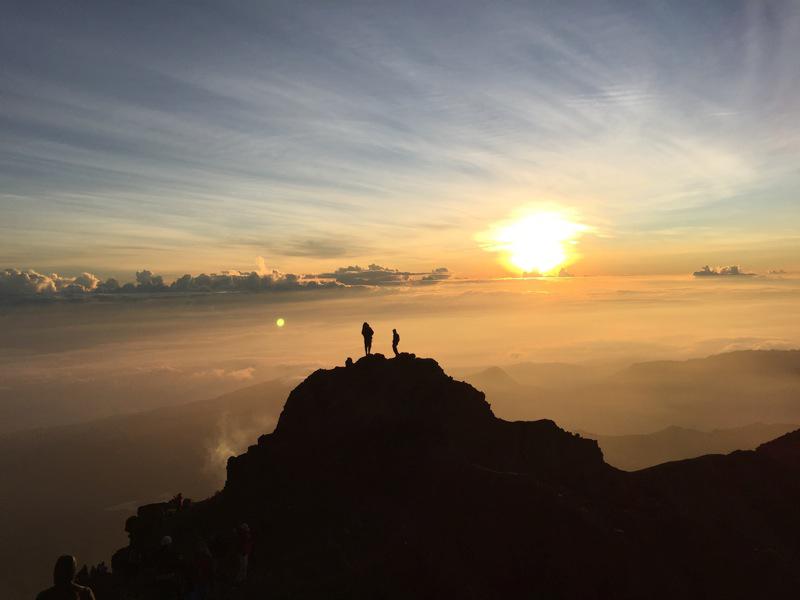
Into the Caldera, up to the Crater Rim:
Breakfast was served back at the camp. We then descended into the caldera. Another beautiful walk. But arriving at the crater lake for lunch, there was yet more rubbish. Recent visitor, Sarah Foster, felt that there was so much trash it wasn’t worth her taking photographs of the otherwise picturesque lakeside scene.
It was the same after the hard slog up to the second crater rim campsite: spectacular setting, too much garbage, worsened by grey monkeys hungrily spreading it about. This time there were a few overflowing trash cans.
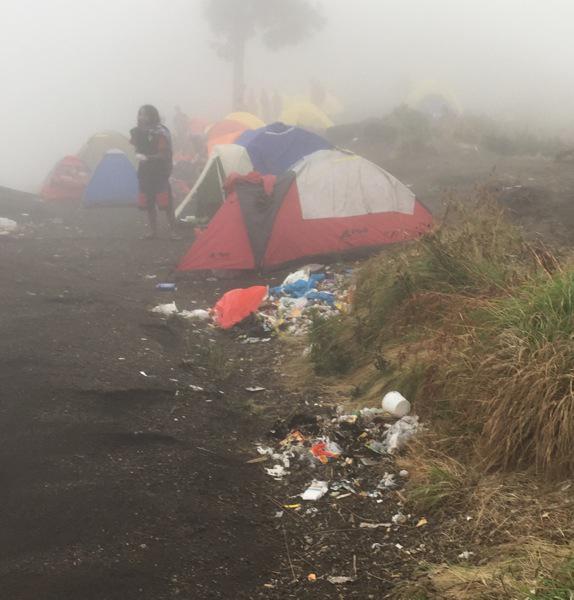
I felt satisfied with my trekking efforts as I completed the final stretch through shady woodland to Senaru Village. My legs ached but it was worth it for sights I am unlikely to see again. I was still bothered by the garbage problem, especially after one-time back-packer Ellen Daplyn who visited Rinjani in 2002, told me of an “isolated, almost tourist free experience. With no litter.”
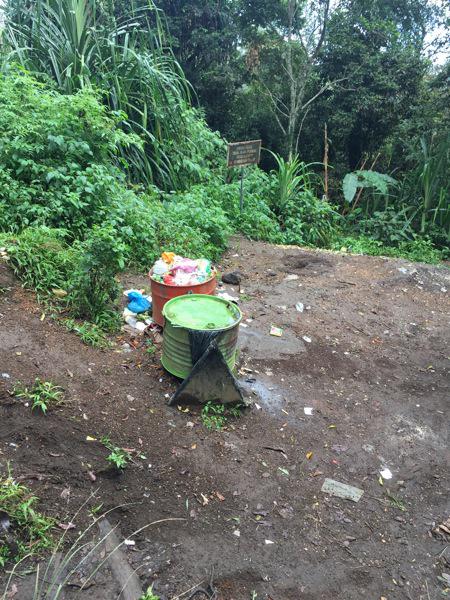
As Tourist Numbers Rise, Trash Problem Escalates
Back at my homestay, internet research revealed a dramatic increase in Rinjani tourist numbers making litter more of a problem. The Lombok Guide reported 60,000 trekkers in 2015 compared to 24,000 in 2013. I headed back up to the park office in search of an official to talk to.
I Gusti Ketut Suartha, head of the Senaru National Park office explained in an interview that “littering has been a problem for a few years caused by the increase in visitors and not enough education.” In response, clean-ups and meetings between authorities, trekking companies and local communities have taken place. This year, a new “trek it in, trek it out,” policy was adopted.
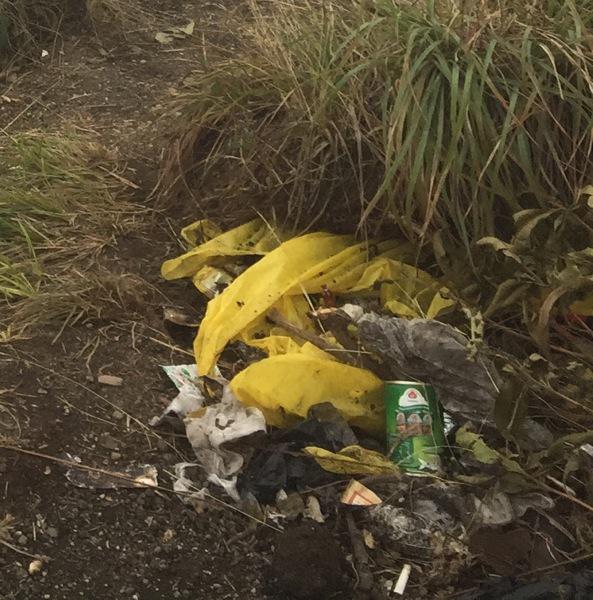
Suartha showed me the “trek it in, trek it out” form completed as visitors enter the park. It detailed potential trash being brought in (like plastic bottles, packs of tissues), ready to be checked off on the visitor’s return. On cue, a staff member and porter appeared and made a show of checking the returning trash against the form. If the form and trash do not match-up; fines are imposed.
“Is this working?” I asked. He said yes, but illegal entrants do not complete the forms. Surely, I wondered, even if a pack of tissues was checked in and out again, there was no guarantee that some used tissues weren’t still up there. Suartha nodded and smiled in response. Questions remain over this policy’s effectiveness.
What Else is Being Done?
500 porters have attended a training session and there is a twice weekly clean up. But Suartha admitted this was not enough. Asked where the entrance fee paid by visitors actually went, responded: “It’s a government tax which does not come directly to us. We receive a proportion of it to cover maintenance.” Suartha told me that Rinjani could be cleared up, but was unsure how to ensure it remains clean.
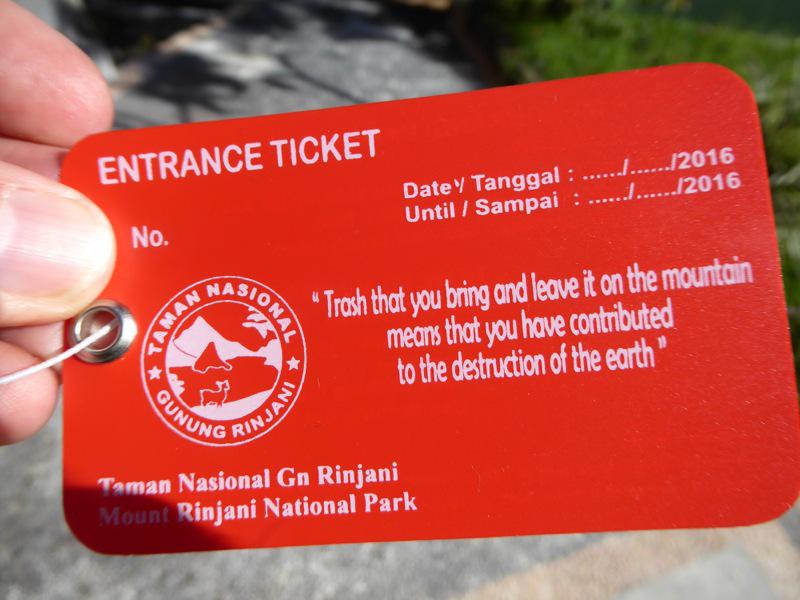
A substantial waste management system, involving everyone wishing to enjoy or profit from Rinjani must be developed. This aside, Rinjani is fantastic and highly recommended. It competes with iconic destinations like Mount Fuji or trekking to Everest base camp. Visitors must make efforts to use responsible trekking companies.
Asked about Rinjani’s future, Dony, whose livelihood depends on Rinjani, remarked “If the litter situation continues, Rinjani will lose its beauty and no guests will come.” He remains profoundly worried.
Ewen Mcleish is a freelance writer focusing on sustainability issues in Thailand and other parts of Southeast Asia. Check out his blog, Sustainable Living Thailand, or Facebook page of the same name.
